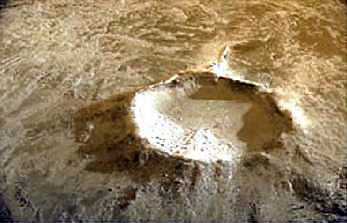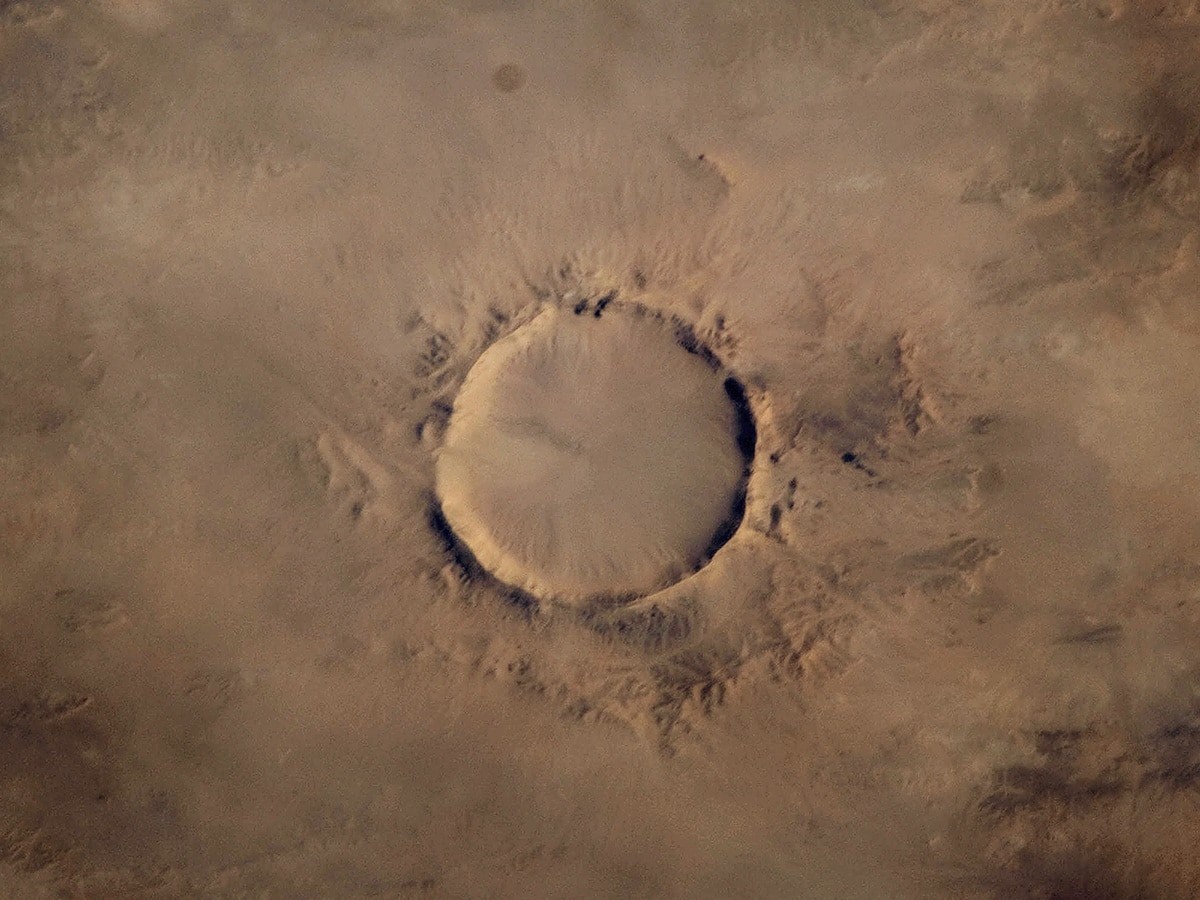Wondermondo 🢖 World 🢖 Wonders of Africa 🢖 Wonders of Mauritania
Territory
Wonders of Mauritania
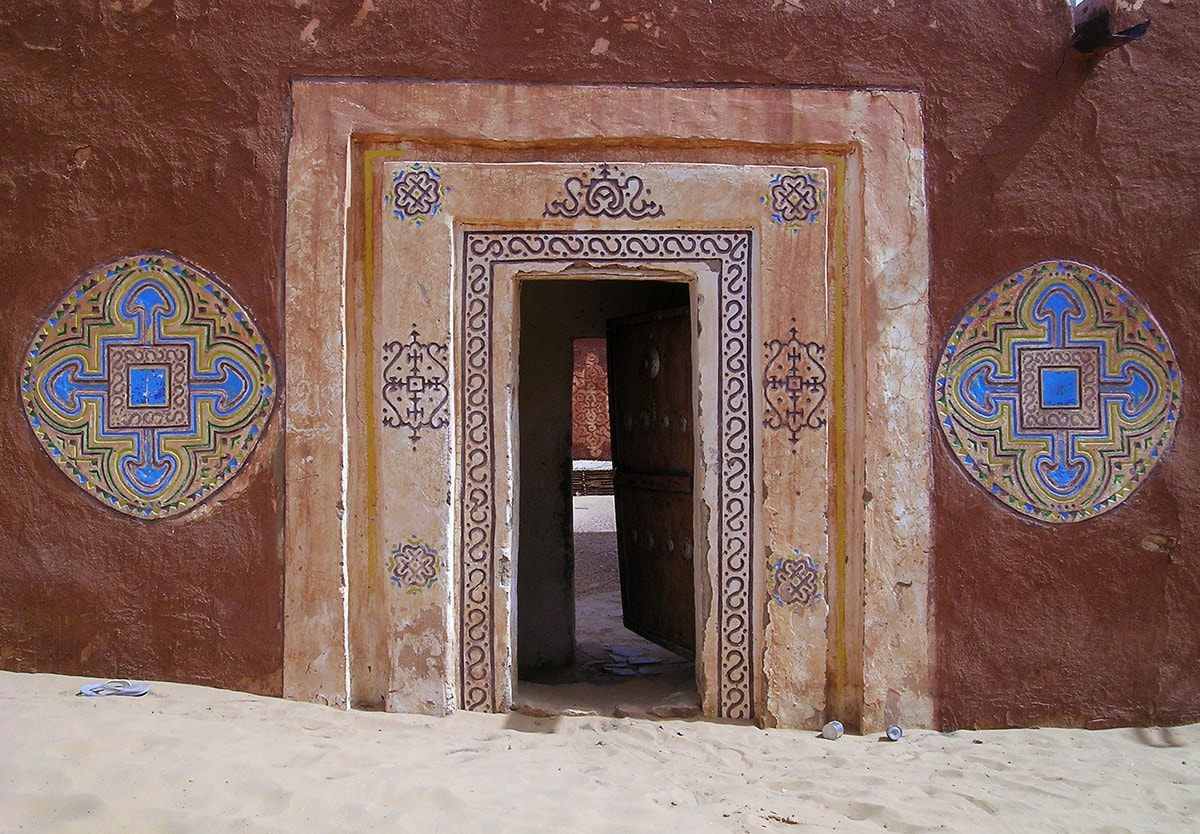
 Highlights
Highlights
Almost all of Mauritania today is desert – somewhere desolate, somewhere – with some plants, lakes, and animals.
In earlier times nature here was less harsh and great cultures developed in Mauritania. People from those times have left countless cliff paintings and etchings, megaliths, and abandoned towns.
Nature of Mauritania also provides surprises such as giant, smooth, and very dark granite monoliths that rise hundreds of meters above the desert. Here is even a wealth of life – millions of birds at the ocean and unusual dwarf crocodiles in the desert plateau of Tagant.
Map with the described wonders
If you see this after your page is loaded completely, leafletJS files are missing.
 Top 25 wonders of Mauritania
Top 25 wonders of Mauritania
Geological wonders
Kediet ej Jill
Tiris Zemmour
Large mountain, the tallest peak in Mauritania. The whole mountain consists of magnetite and has a bluish color. The area has a strong magnetic field.
Aouelloul crater
Adrar
Well-preserved impact crater. Formed approximately 3.1 million years ago (Pliocene). Diameter 390 m.
Ben Amera (Ben Amira)
Adrar
One of the largest monolithic masses of rock in the world: some 400 m high, dark grey pyramid that rises from the desert sands. Prehistoric rock art is found nearby.

Tenoumer crater
Tiris Zemmour
A well-visible, interesting impact crater. Diameter – 1.9 km, depth 110 m, age – approximately 21,400 years.
Temimichât-Ghallaman crater
Tiris Zemmour
Possible impact crater with well-visible circular crater rims. The geological origin of this structure is not clear.
Aicha monolith
Adrar
Giant natural monolith – a pyramidal, dark grey mountain that rises from the desert.
Maghrouga cliff formations
Hodh Ech Chargui
An amazing monolith with several great natural arches.
Biological wonders
Hartéga Guelta dwarf crocodiles and other dwarf crocodiles of Tagant plateau
Tagant
In the small, perennial lakes of the dry Tagant plateau has survived dwarfed population of desert crocodiles (Crocodylus suchus). These crocodiles are not more than 2 – 3 m long and can survive the dry period by estivating in caves or even burrowing in the sand.
Archaeological wonders
Tensès rock art
Adrar
Naturalistic rock art of good quality, depicting humans, wild animals, and cattle.
Taoujafet rock art
Adrar
Site with exquisite prehistoric rock art.
Dhar Tichitt
Tagant
An interesting prehistoric site with a complex system of stone walls and rich finds of rock art.
M’treoka rock art
Hodh Ech Chargui
Unusual prehistoric rock art resembles some type of proto-writing.
El Rhallouiya rock art
Adrar
Site with rock engravings from three time periods. Most ancient are from 2000 – 500 BC (wild fauna), and the second period is approximately from 500 BC to 0 AD (shows also cattle and carts). Engravings from around 0 AD include also some Lybico-Berber writings.
Guilemsi rock art
Tagant
Sandstone ridge with several shelters, contains valuable rock art and prehistoric stone enclosures, presumably 3 – 4 thousand years old.
Amogjar rock art
Adrar
Eight groups of rock art of high quality, most pictures show cattle. The oldest art is from the Neolithic Age, newer drawings show horses as well.
Atar stone circles
Adrar
Several Neolithic stone circles. Monuments are well preserved in the desolate desert environment.
Architecture wonders
Chinguetti
Adrar
Historical desert town, a medieval trading center. Founded in the 12th – 13th century next to an older village. The city is partly abandoned but still provides a striking urban landscape. Five libraries with valuable manuscripts.
Oualata
Hodh Ech Chargui
Small, old desert town, since the 14th century – a part of the Mali Empire. The adobe houses in the village are highly decorative, with ornamented paintings.
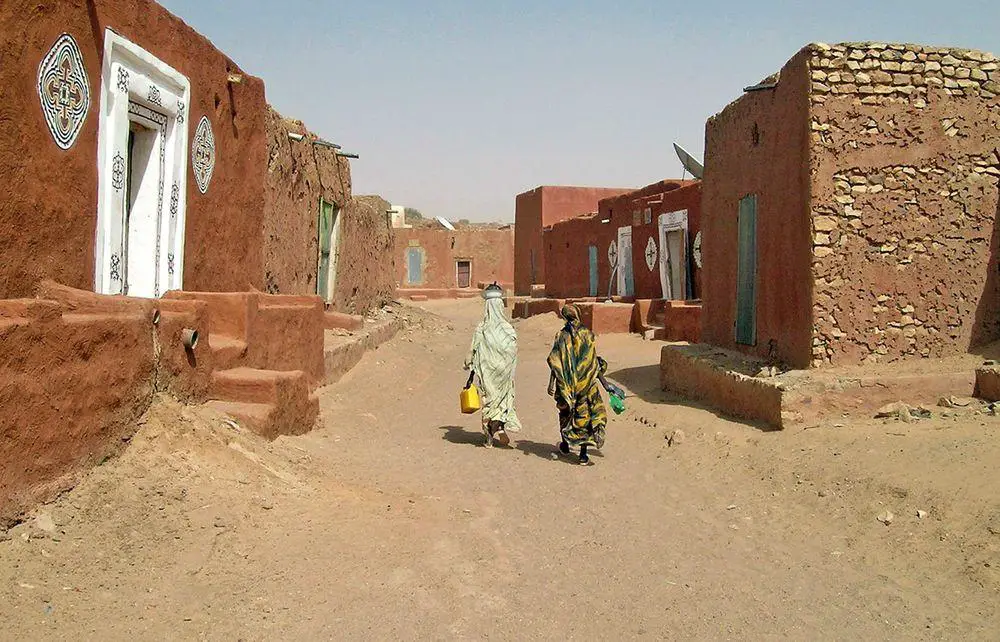
Tichit (Tichitt)
Tagant
Very old desert town, almost abandoned. Already in the 11th century, it was one of the major centers in this region and flourished until the 19th century. Contains valuable buildings in the vernacular style.
Ouadane
Adrar
Ruins of historical desert town – staging post for caravans. Could be established in the 12th century, and city walls were built in the Middle Ages. Prospered in the 14th – 18th centuries.
Nouadhibou port
Dakhlet Nouadhibou
World’s largest ship graveyard with more than 300 rusting ships in the port.
Koumbi Saleh
Hodh Ech Chargui
Ruins of a medieval city, possible capital of the Ghana Empire. This large Muslim city was inhabited in the late 9th – 14th centuries. Now approximately 15 m tall mound remains in the place where some 15 – 20 thousand people lived.
Kaédi Regional Hospital
Gorgol
Hospital building with amazing, innovative architecture, uniting traditional and modern styles. Constructed in 1989.
Chinguetti Mosque
Adrar
An ancient mosque, built around the 13th – 14th century. The minaret of this mosque could be the second oldest minaret in the world.
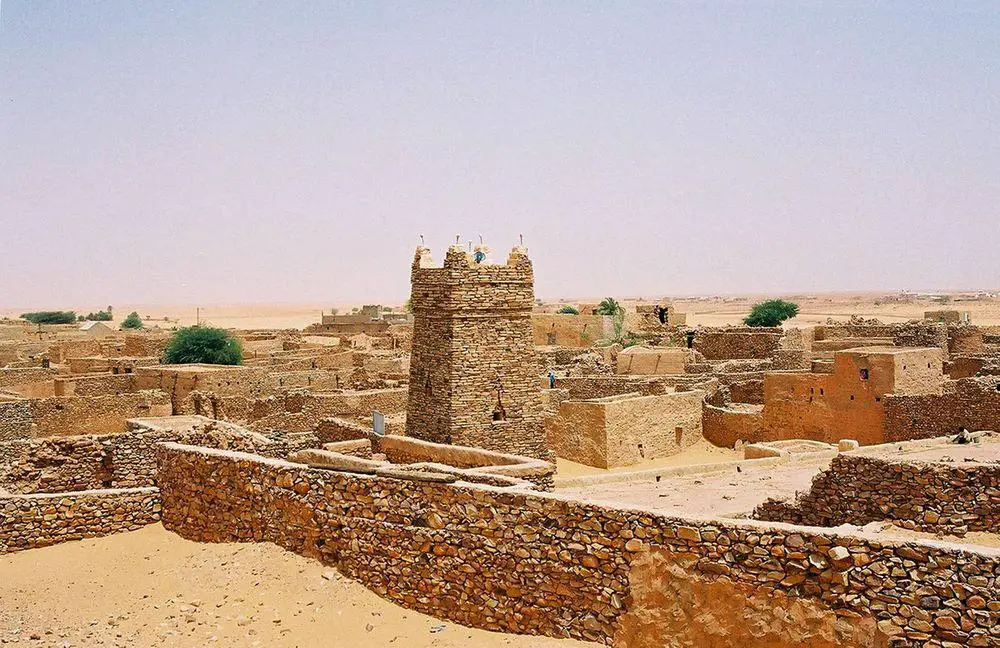
Ksar el Barka
Tagant
A remote desert village, established in 1690. The village has a typical vernacular architecture – dry stone walls and often – columns.
 Recommended books
Recommended books
Travels in Mauritania (Flamingo)
When Peter Hudson set off for Mauritania, he knew it only as a big blank space on a map of Africa. Traveling from the capital, Nouakchott, hardly more than a desert encampment, he found among the oases and ancient caravan towns a people in harmony with their harsh surroundings and began to understand something of the emerging nation’s confrontation with the This book describes Hudson’s travels as he progressed by foot, canal and donkey.
To the Moon and Timbuktu: A Trek Through the Heart of Africa
Nina Sovich had always yearned for adventures in faraway places; she imagined herself leading the life of a solitary traveler. Yet at the age of thirty-four, she found herself married and contemplating motherhood. Catching her reflection in a window spotted with Paris rain, she no longer saw the fearless woman who spent her youth traveling in Cairo, Lahore, and the West Bank staring back at her.

